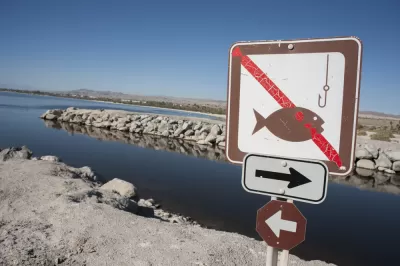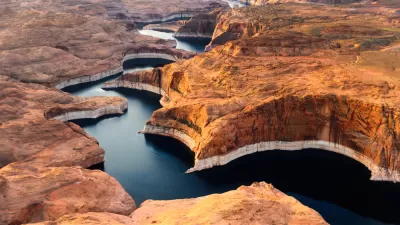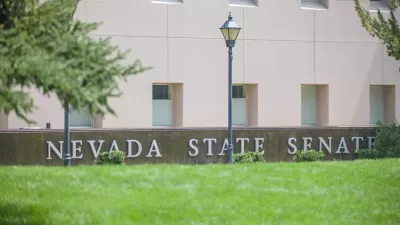A Los Angeles Times editorial board sheds light on the ongoing environmental disaster of the Salton Sea in California, and the lack of action by the state to mitigate the worsening impacts.

"California’s largest internal body of water is steadily drying up, exposing a lake bed that threatens to trigger toxic dust storms and exacerbate already high levels of asthma and other respiratory diseases in Southern California," according to the editorial.
Despite those stakes, the remoteness of the Salton Sea makes it too easy for the state's political leadership to ignore. But it shouldn't be—it's hydrologically connected to the state's freshwater supplies in the north and the south, according to the editorial, and it's a "disaster in the making," felt most acutely by the Imperial Valley region in the state of California. The Colorado River supplied "mitigation water" to the Salton Sea until last year—and a 20-year drought on the watershed is likely to complicate large water deliveries to the Salton Sea (despite promises that the Imperial Valley's concerns will be met by a draft Drought Contingency Plan awaiting Congressional approval).
The editorial raises awareness that the environmental disaster promised by scientists for years started to become a reality this past winter. "As the rain and snow washed away drought and at least temporarily diminished environmental problems in the rest of the state, the contraction of the Salton Sea accelerated. Increasing salinity kept the lake from sustaining even the salt-hardy tilapia. The birds failed to appear."
As for whether California's new political leadership can muster the will to change the state's pattern of neglect regarding the Salton Sea, the editorial does indicate a note of optimism in new Governor Gavin Newsom's previous statements on the subject.
FULL STORY: The Salton Sea is a disaster in the making. California isn’t doing anything to stop it

Alabama: Trump Terminates Settlements for Black Communities Harmed By Raw Sewage
Trump deemed the landmark civil rights agreement “illegal DEI and environmental justice policy.”

Study: Maui’s Plan to Convert Vacation Rentals to Long-Term Housing Could Cause Nearly $1 Billion Economic Loss
The plan would reduce visitor accommodation by 25% resulting in 1,900 jobs lost.

Why Should We Subsidize Public Transportation?
Many public transit agencies face financial stress due to rising costs, declining fare revenue, and declining subsidies. Transit advocates must provide a strong business case for increasing public transit funding.

Paris Bike Boom Leads to Steep Drop in Air Pollution
The French city’s air quality has improved dramatically in the past 20 years, coinciding with a growth in cycling.

Why Housing Costs More to Build in California Than in Texas
Hard costs like labor and materials combined with ‘soft’ costs such as permitting make building in the San Francisco Bay Area almost three times as costly as in Texas cities.

San Diego County Sees a Rise in Urban Coyotes
San Diego County experiences a rise in urban coyotes, as sightings become prevalent throughout its urban neighbourhoods and surrounding areas.
Urban Design for Planners 1: Software Tools
This six-course series explores essential urban design concepts using open source software and equips planners with the tools they need to participate fully in the urban design process.
Planning for Universal Design
Learn the tools for implementing Universal Design in planning regulations.
Smith Gee Studio
Alamo Area Metropolitan Planning Organization
City of Santa Clarita
Institute for Housing and Urban Development Studies (IHS)
City of Grandview
Harvard GSD Executive Education
Toledo-Lucas County Plan Commissions
Salt Lake City
NYU Wagner Graduate School of Public Service





























